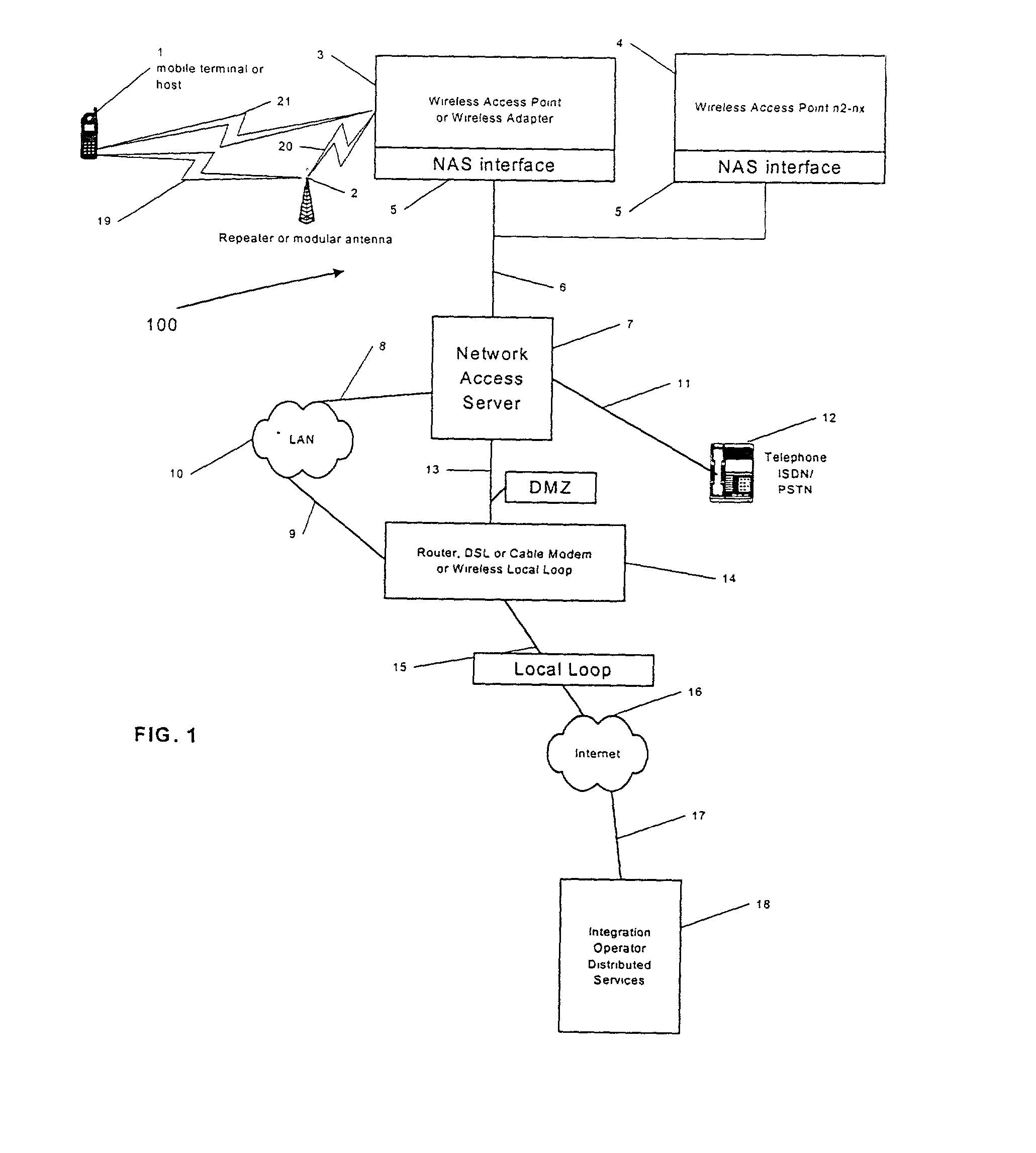Integrating public and private network resources for optimized broadband wireless access and method
a public and private network technology, applied in the field of digital networks, can solve the problems of limiting bandwidth, adversely affecting signal quality, and present systems designed to provide wireless network access
- Summary
- Abstract
- Description
- Claims
- Application Information
AI Technical Summary
Problems solved by technology
Method used
Image
Examples
Embodiment Construction
[0038] The preferred embodiments of the present invention will now be described in detail with reference to the drawings, in which like elements are identified by the same references. The following description is exemplary and not limiting.
[0039] In general, the radio link terminology used herein is based on the IEEE 802.11b standard for Wireless Ethernet. However, the principles and implementations described herein are not intended to be limited to any particular wireless network communication protocol, but rather are intended to take advantage of any appropriate broadband wireless network communication protocol, including but not limited to the Wireless LAN protocol specified by IEEE 802.11 and the Bluetooth protocol, recently adopted as IEEE 802.15.
[0040] Referring to FIG. 1, there is shown a functional block diagram illustrating a presently preferred system 100 embodying the invention. The primary purpose of the system 100 is to provide mobile, wireless terminals 1 with access t...
PUM
 Login to View More
Login to View More Abstract
Description
Claims
Application Information
 Login to View More
Login to View More - R&D
- Intellectual Property
- Life Sciences
- Materials
- Tech Scout
- Unparalleled Data Quality
- Higher Quality Content
- 60% Fewer Hallucinations
Browse by: Latest US Patents, China's latest patents, Technical Efficacy Thesaurus, Application Domain, Technology Topic, Popular Technical Reports.
© 2025 PatSnap. All rights reserved.Legal|Privacy policy|Modern Slavery Act Transparency Statement|Sitemap|About US| Contact US: help@patsnap.com



